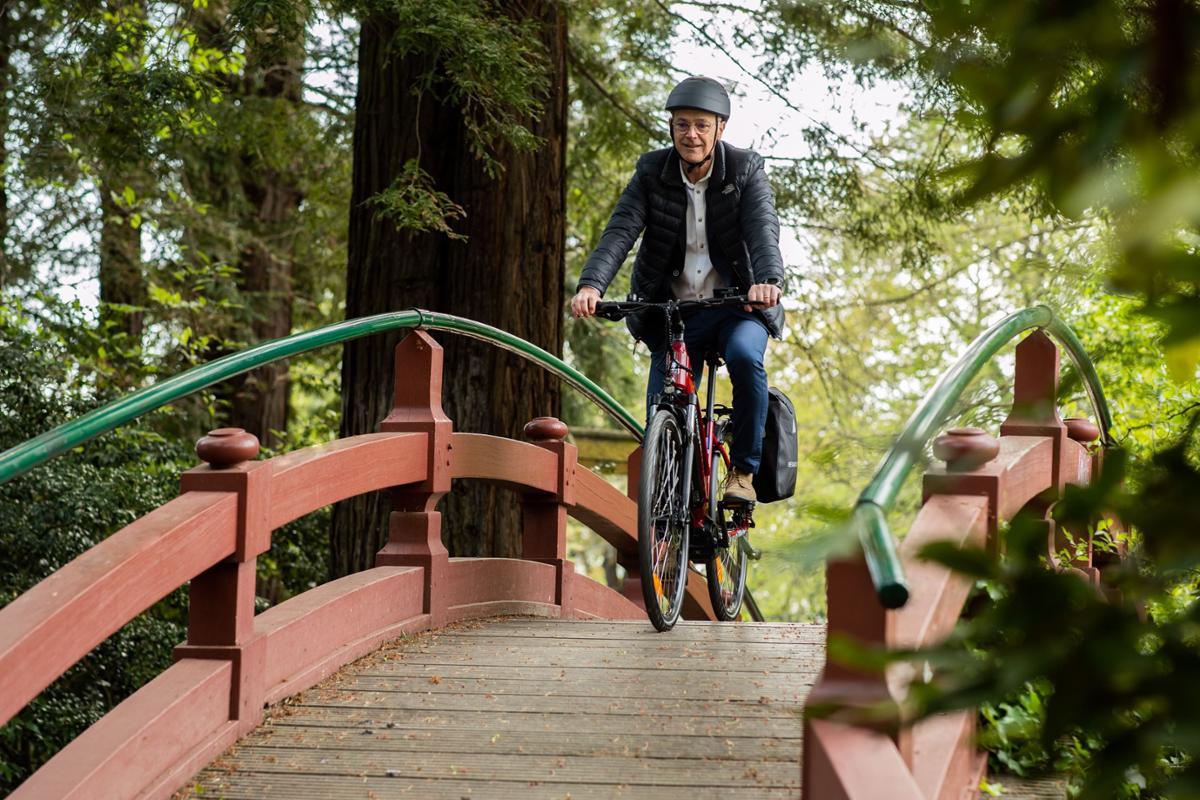Fake claims cause range anxiety? We compare sales techniques
Range anxiety shouldn't be a thing
When buying an electric bike one of the first questions customers ask us is "How far will it go?"
This should be an easy question to answer honestly and informatively, however, we've noticed a real hotch-potch of obfuscation and caveats amongst the industry as a whole that could almost seem designed to promote confusion and, ultimately, anxiety that any customer should never have to experience. Buying an ebike should be filled with pleasure and joy - a confident purchase without guesses or doubts. So with that ambition, we try to un-pick manufacturer claims to reveal how best to compare electric bike range claims.

Factors affecting bike range
There are so many factors that can affect the assisted range of an ebike that it’s very tempting to say “How long is a piece of string!”
Here are just some of the things that will reduce range...
- Cold weather
- Low tyre pressure
- Stopping and starting during the journey
- Hills
- Headwinds
- Rider weight and additional loads
- Bike weight
- Not using gears correctly
- Suspension forks
- Poor maintenance
- Bad road surfaces
Measurables are much more meaningful
Claims made by manufacturers vary wildly; as it’s a major deciding factor in choosing an ebike the temptation is for claims to be highly "optimistic". This has given rise to the popularity of the “up to” caveat in describing what distance the assistance will take you. Using the term "Up to" is a powerful legal convenience often now used to state the ridiculous!
At Juicy we have always encouraged potential customers to base their comparison research on battery capacity rather than rely on manufacturer claims regarding distance. Battery capacity is a measurable quantity, described in either Amp Hours (AH) or Watt-Hours (WH); the higher the number, the further you’ll go.
Simply, a 13AH / 470WH battery will take you further than a 10.5AH / 380WH battery.
Differences between rider sensing systems
There are essentially two methods for sensing how much power an ebike should provide the rider: torque and cadence systems. Torque-sensing measures rider effort whilst cadence reacts to pedal movement, providing power regardless of effort.
Torque sensor systems can make battery use more efficient, but they do this by delivering less power when you work less and more when you work harder, making it easier to conserve power through greater rider effort. So, if the bike has a torque sensor rather than a cadence sensor, you should go further, but you’ll work a little harder. If you enjoy a work out try a torque sensor. More casual riders may well prefer the less effort required of a cadence system.
Power consumption
Less easy to numerically compare are claims made about motor power. Everyone can read and compare the consumption in watts of a motor, or compare the figures given for torque output measured in Newton Metres (NM). But few of us are able to do more than experience the difference. Here we rely on the honesty of the figures given us; the honesty of the manufacturer's pronouncement. There IS a legal limit to the output of any motor type and this is measured in Watts, which in general is 250W "mean output" for our popular category of ebike. However, this is so loosely interpreted that it is, fortunately, quite easy to experience the difference between the most powerful 250W motors and those that aren't nearly up to the job.
How to compare? Just give them a ride! Doing so may even reveal a bike that is scarily too powerful and not for you at all, and which is also likely to consume the available battery capacity far too soon.
Regardless, for paper comparison, we have to assume that all manufacturers of any note are using up all of the 250 available watts under the law.
Quantifiable Joy
With the growth of conventional bike manufacturers coming into the ebike market, the information provided to purchasers can sometimes be vague, or even missing entirely. All electric bikes provide joy, but if you can’t find the numbers you'll never be able to buy with any confidence i.e. "measure your pleasure". Having decided to invest in an electric bike it’s helpful to at least know the basics of the electrical spec.
When test riding Juicy, so many cycling journalists exceeded our own stated range estimates
We’d hate to see customers dismiss our bikes without trying them because they don’t see extravagant “up to” claims on our website and in our leaflets.
At Juicy, we have always aimed to describe what a bike WILL achieve in medium assist with an "average" rider, but as the market has grown, we've noticed the typical rider getting younger and fitter, turning to e-bikes for convenience and fun rather than through necessity. Younger, fitter riders are recognising the benefits of e-bikes and our "average" customer is changing. Perhaps it’s time we changed with them, but for now, we present range as a given for all, rather than rely on small-print caveats.
A dilemma for Juicy
Do we continue to only show a realistic mid-range figure?
Do we join those who show what the very fittest riders would achieve in the best conditions?
Or do we follow those brands who simply leave it to your imagination?
